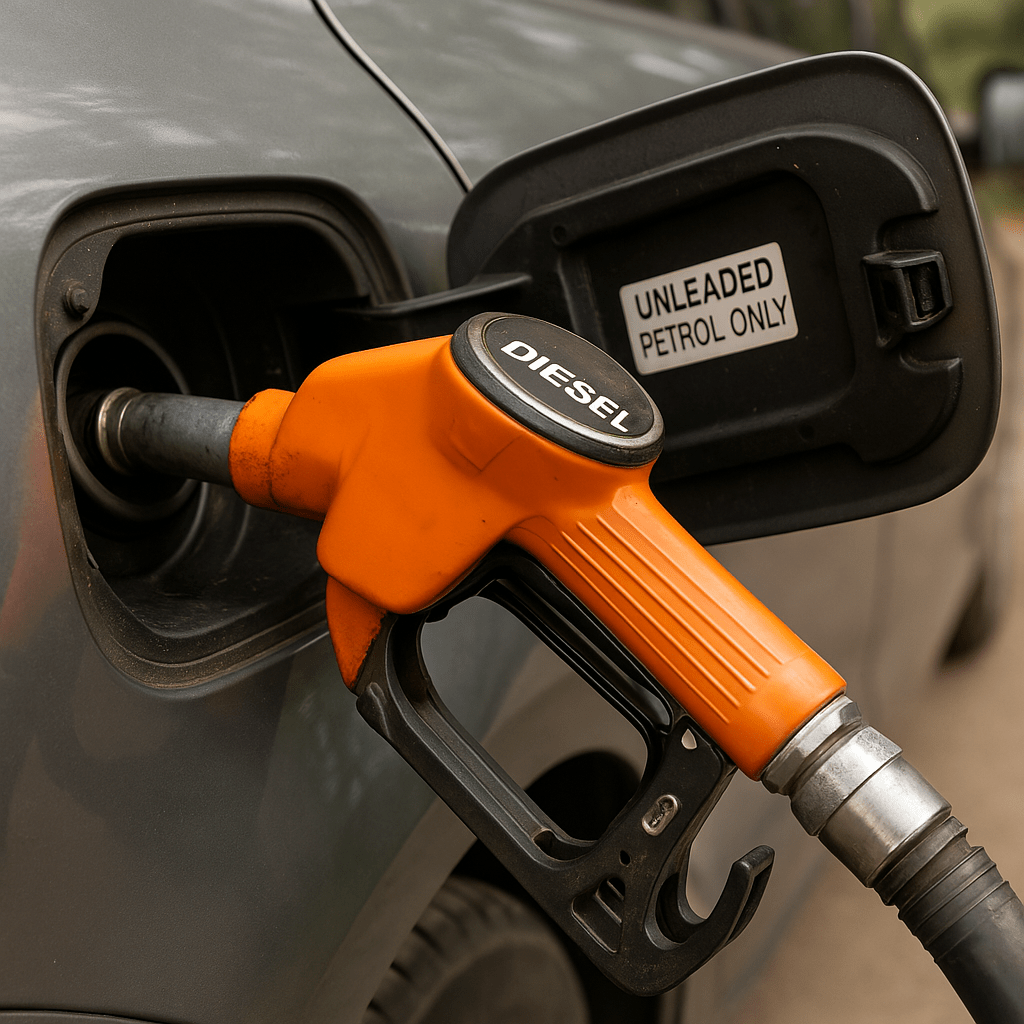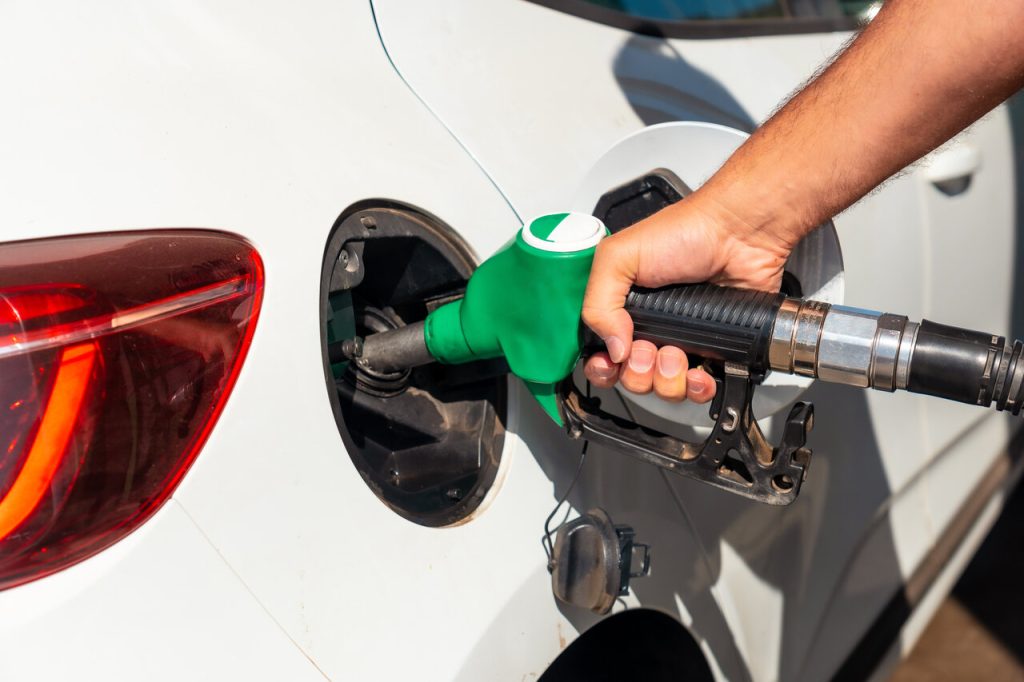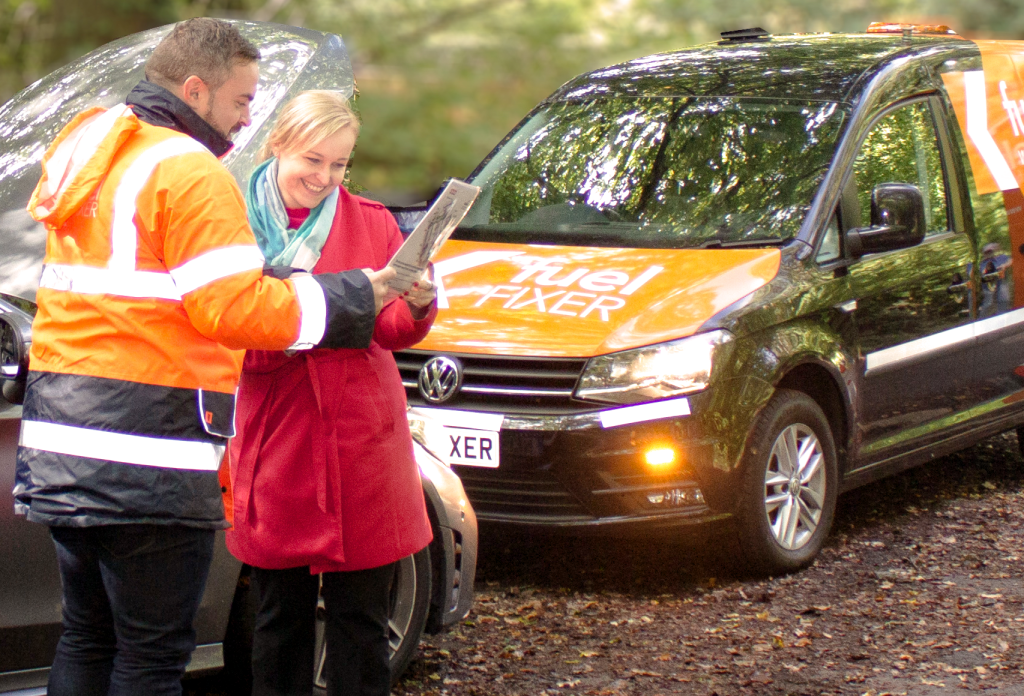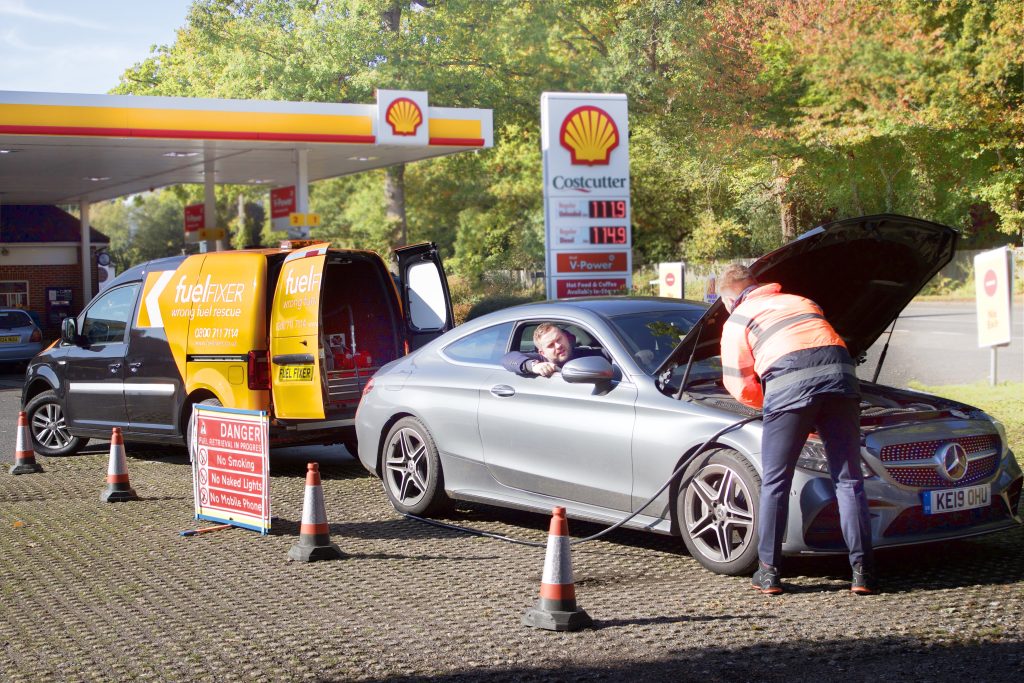Accidentally Put Diesel in a Petrol Car By Mistake and Drove It?
Putting the wrong fuel in your car is more common than many people think. Every year in the UK, thousands of drivers accidentally put diesel in a petrol tank. It’s a simple mistake, but one that can have serious consequences for your vehicle if not addressed quickly.

FuelFixer, a leading fuel draining service operating nationwide, is here to help you understand what happens when this mistake is made—and what you should do about it.
Modern diesel vehicles are highly sensitive to the quality of fuel and filling diesel car with petrol can ruin the engines quite quickly. Fortunately, you can limit potential damage if you realize your mistake sooner.

Why Does Misfuelling Happen?
With modern petrol and diesel fuel caps looking more similar than ever, and many drivers switching between petrol and diesel vehicles, it’s surprisingly easy to put diesel in a petrol tank. Whether you’re in a hurry, distracted, or using a hire car, one wrong move at the pump can lead to a stressful situation.
Diesel nozzles are usually larger than petrol ones, which makes it harder to fit a petrol nozzle into a diesel car. But unfortunately, the reverse—fitting a diesel nozzle into a petrol tank—is relatively easy.
You’ll then have to call a fuel removal service to drain your car’s fuel tank, flush the engines, and help you get back on the road as quickly as possible.
What Happens When You Put Diesel in a Petrol Tank?
Petrol engines are not designed to handle diesel fuel. Petrol is more volatile than diesel, and it’s meant to ignite from a spark created by spark plugs. Diesel, on the other hand, is heavier and ignites through compression. When diesel is introduced into a petrol engine, several problems can occur:
Costly Repairs: If the engine is started and diesel circulates through the system, repair costs can skyrocket due to internal contamination.
Poor Combustion: Diesel doesn’t evaporate like petrol, so it won’t burn properly in a petrol engine. This leads to poor ignition and performance issues.
Engine Misfiring: You may notice that the engine struggles to start or runs unevenly.
Clogging of Fuel System: Diesel is oilier and can clog petrol fuel injectors and spark plugs, causing potential damage to components like the catalytic converter.

Prevention Tips
While mistakes happen, here are a few tips to help avoid putting diesel in a petrol tank in the future:
- Label your fuel cap: A small sticker noting “PETROL ONLY” can be a helpful reminder.
- Stay focused at the pump: Avoid distractions and double-check the nozzle before filling up.
- Use a misfuel prevention device: These are relatively inexpensive gadgets that prevent the wrong nozzle from fitting into your fuel tank.
- Know your hire car: Always check what type of fuel the vehicle takes before filling up.
Immediate Steps to Take
If you realise you’ve put diesel in a petrol tank, the most important thing to remember is not to start the engine. Starting the car will circulate the diesel through the fuel system, making the problem much worse and more expensive to fix.
Here’s what to do instead:
- Stop immediately: If you’re still at the pump, don’t turn the key.
- Alert the station staff: They may help you move the vehicle safely out of the way.
- Call FuelFixer: Our mobile fuel drain experts operate all across the UK, and we can come to you, wherever you are, usually within an hour.

What FuelFixer Does
FuelFixer specialises in misfuel recovery and has helped over 100,000 motorists across the UK. If you’ve put diesel in a petrol tank, our trained technicians will:
- Safely drain the contaminated fuel from your vehicle.
- Flush the fuel lines and engine components to remove any residue.
- Refill your tank with the correct fuel.
- Ensure your vehicle is road-ready before you leave.
We offer a quick, cost-effective alternative to dealership repairs or towing services. Our mobile service vans are fully equipped and can reach you whether you’re stuck at a service station, on the roadside, or at home.
Why Speed Matters
The longer diesel sits in a petrol tank, the greater the chance of damage. Once the engine is started, diesel can cause more harm to sensitive components like fuel injectors, spark plugs, and catalytic converters. These parts are not only expensive but can also take time to replace. Calling FuelFixer immediately helps limit the risk and cost of damage.
Why Choose FuelFixer?
With fast response times, nationwide coverage, and competitive pricing, FuelFixer is one of the UK’s most trusted misfuel recovery services. Our experienced team understands the stress of putting diesel in a petrol tank, and we’re committed to getting you back on the road quickly and safely.
Whether you’re in London, Manchester, Glasgow, or a remote corner of the countryside, we’re just a phone call away. Our 24/7 service means help is always available, day or night.
Final Thoughts
Putting diesel in a petrol tank can be a frustrating and costly mistake, but with the right response, it doesn’t have to be a disaster. Acting fast and calling in professional help can save you time, money, and stress. If you ever find yourself in this situation, remember: don’t start the engine—just call FuelFixer.
Let our experts handle the mess so you can get back to what matters—driving safely.